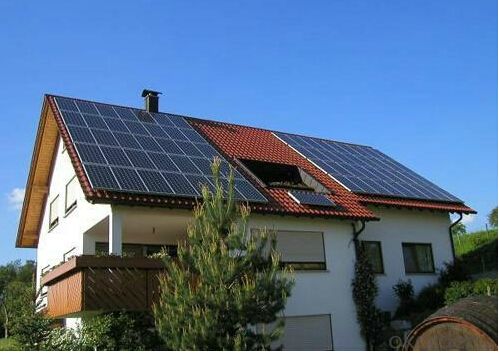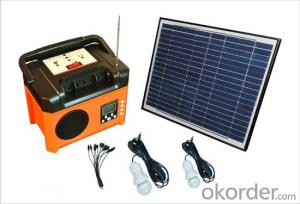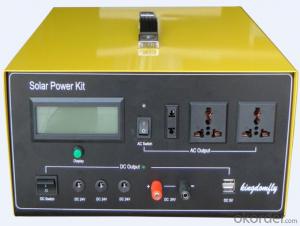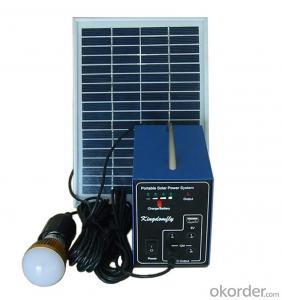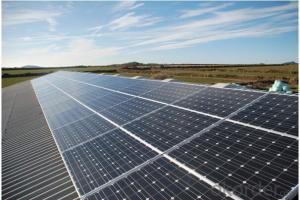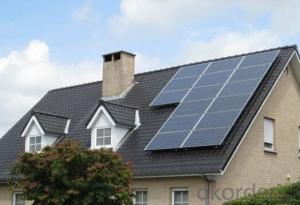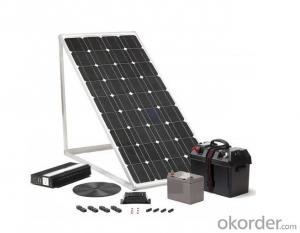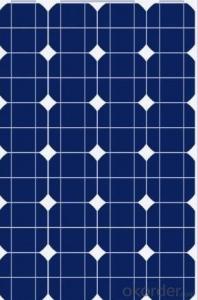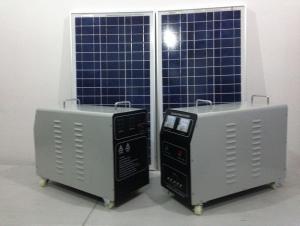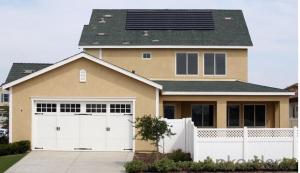Solar Energy Systems Companies' 500W Solar System Made in China
- Loading Port:
- China Main Port
- Payment Terms:
- TT OR LC
- Min Order Qty:
- -
- Supply Capability:
- -
OKorder Service Pledge
Quality Product, Order Online Tracking, Timely Delivery
OKorder Financial Service
Credit Rating, Credit Services, Credit Purchasing
You Might Also Like
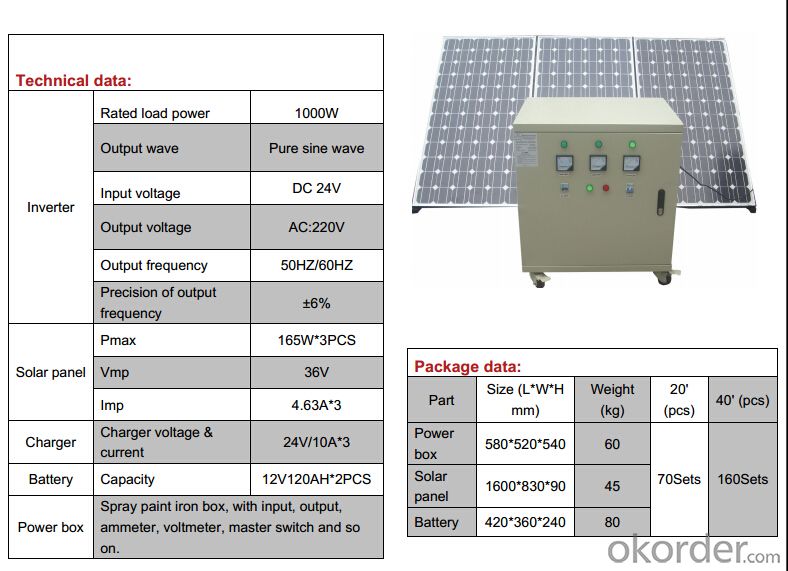
- Q: Can solar energy systems be used for powering RVs?
- Yes, solar energy systems can be used to power RVs. Solar panels can be installed on the roof of the RV to capture sunlight and convert it into electricity. This renewable energy source can then be used to power various appliances and systems within the RV, such as lights, refrigerator, water heater, and more. The availability of solar power allows RV owners to reduce their reliance on traditional fuel-powered generators and enjoy a more sustainable and cost-effective energy solution.
- Q: Can solar energy systems be used for powering wastewater or sewage treatment plants?
- Yes, solar energy systems can be used for powering wastewater or sewage treatment plants. Solar panels can convert sunlight into electricity, which can be used to power various operations within the treatment plants such as pumps, aeration systems, and other equipment. This renewable energy source helps reduce reliance on traditional power sources and lowers the overall carbon footprint of these facilities.
- Q: Can solar energy systems be used to charge electric vehicles?
- Yes, solar energy systems can be used to charge electric vehicles. Solar panels can generate electricity from sunlight, which can be used to charge the batteries of electric vehicles. This allows for a clean and sustainable way of powering electric vehicles, reducing dependence on fossil fuels and lowering carbon emissions.
- Q: Can solar energy systems be used for powering outdoor lighting?
- Yes, solar energy systems can be used to power outdoor lighting. Solar panels collect sunlight and convert it into electricity, which can then be stored in batteries or used directly to power outdoor lighting fixtures. This eliminates the need for traditional power sources and reduces energy costs while providing environmentally-friendly lighting solutions.
- Q: Can solar energy systems be used for powering emergency backup systems?
- Yes, solar energy systems can be used to power emergency backup systems. Solar panels can generate electricity even during power outages, providing a reliable and sustainable source of energy for critical systems such as emergency lighting, communication devices, medical equipment, and more. By harnessing the power of the sun, solar energy systems offer a viable solution for ensuring continuous power supply during emergencies.
- Q: Can solar energy systems be used in areas prone to hurricanes?
- Yes, solar energy systems can be used in areas prone to hurricanes. While hurricanes can cause damage to infrastructure, including solar panels, advancements in technology have allowed for more resilient solar energy systems that can withstand extreme weather conditions. Proper installation and design, such as using hurricane-resistant materials and securing the panels, can help ensure their durability during hurricanes. Additionally, solar energy systems can provide a reliable and sustainable source of power during and after hurricanes, helping communities to recover and rebuild.
- Q: What is solar battery storage?
- Solar battery storage refers to the technology that allows energy generated from solar panels to be stored in batteries for later use. It is a system that captures excess electricity produced by solar panels during the day and stores it in batteries, instead of sending it back to the grid. This stored energy can then be utilized during times when the solar panels are not producing enough electricity, such as at night or during cloudy days. Solar battery storage has several benefits. Firstly, it enables homeowners and businesses to become more self-sufficient and reduce their reliance on the traditional electrical grid. By storing excess energy, they can use it during peak demand periods or when there is a power outage, ensuring a constant and uninterrupted power supply. Additionally, solar battery storage helps optimize the use of solar energy. As solar panels often produce more electricity than what is immediately needed, the excess energy would typically be wasted or sent back to the grid. With battery storage, this excess energy can be stored and used later, maximizing the utilization of solar power and reducing the need for fossil fuel-based electricity. Furthermore, solar battery storage can also help in reducing electricity bills. By using stored energy during peak demand periods when electricity rates are higher, users can avoid paying higher prices for electricity from the grid. This can result in significant cost savings over time. Overall, solar battery storage is an innovative technology that enhances the efficiency and reliability of solar energy systems. It enables users to store excess energy for later use, reducing reliance on the grid, optimizing solar power utilization, and potentially saving money on electricity bills.
- Q: Can solar energy systems be used for powering remote monitoring systems?
- Yes, solar energy systems can be used to power remote monitoring systems. Solar panels can capture sunlight and convert it into electricity, which can then be used to power various devices, including remote monitoring systems. This is particularly useful in remote or off-grid locations where traditional power sources are not easily accessible. Solar energy systems provide a sustainable and cost-effective solution for powering remote monitoring systems while reducing reliance on fossil fuels.
- Q: Can solar energy systems be used for powering electric gates or fences?
- Yes, solar energy systems can certainly be used to power electric gates or fences. Solar panels can be installed to harness sunlight and convert it into electricity, which can then be used to operate the gates or fences. This renewable energy source offers a sustainable and cost-effective solution for powering such systems, reducing reliance on traditional grid electricity and contributing to environmental conservation.
- Q: How does solar energy storage work?
- Solar energy storage works by capturing and storing the energy produced by solar panels during periods of sunlight. This stored energy can then be used during times when sunlight is not available, such as during the night or on cloudy days. Typically, solar energy storage systems use batteries to store the excess energy generated by the solar panels. These batteries store the energy in the form of chemical potential, which can be converted back into electricity when needed. This allows for a continuous and reliable supply of solar energy, even when the sun is not shining.
Send your message to us
Solar Energy Systems Companies' 500W Solar System Made in China
- Loading Port:
- China Main Port
- Payment Terms:
- TT OR LC
- Min Order Qty:
- -
- Supply Capability:
- -
OKorder Service Pledge
Quality Product, Order Online Tracking, Timely Delivery
OKorder Financial Service
Credit Rating, Credit Services, Credit Purchasing
Similar products
Hot products
Hot Searches
Related keywords

